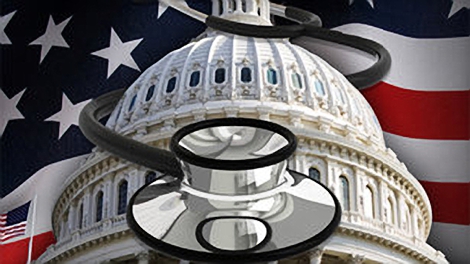ANALYSIS/OPINION:
It’s beginning to look like the Republicans have pretty much abandoned their promise to “repeal and replace” Obamacare. Considering they don’t have the votes to do it this does not come as a big surprise. If they want to remain in power though, they have to come up with something.
Fortunately, President Donald Trump is leading and may announce as soon as Thursday a plan to bring the cost of prescription drugs down using market forces rather than mandates. Working through Health and Human Services Secretary Alex Azar, the administration is expected to strongly endorse price competition though the formulary process (developing a list of approved drugs selected to provide the most value) as the key to controlling drug costs.
This is what the voters want. According to several recent polls controlling drug costs is one of the three or four issues most important to people deemed likely to vote in the next elections. Therefore, it’s fortunate good policy and good politics are intersect this way.
Even common-sense approaches to controlling costs — like moving prescription drugs from Medicare Part B to Medicare Part D to increase the government’s ability to negotiate on price — will face fierce opposition on Capitol Hill from drug makers (PhRMA spent $150 million in advertising in favor of Obamacare passage) and from those who believe a Bernie Sanders-style single payer approach is the only reform Congress should even think about enacting.
It’s up to House Speaker Paul Ryan and Senate Majority Leader Mitch McConnell whether they want to follow Mr. Trump’s lead and go further. They’ve been burned, badly, by their failure to “repeal and replace” and with their colleagues are reluctant to take up the issue again.
From a political standpoint, that would be an epic fail leading to serious consequences for the GOP’s congressional majority. Rather than wipe the slate clean, they can utilize now-proven concepts used by pharmacy benefits managers, or PBMs, to produce savings for consumers. Again, this is something the voters want.
No one has to go all in at first. Moving drugs to Medicare Part D as a demonstration project for certain therapeutic classes could be the first step toward future, system-wide reform if, as it is almost certain to do, it works.
On the formulary side, the idea of allowing approved plans to cover just one drug per category or class within Medicare’s protected classes rather than two would also increase the government’s bargaining power on behalf of patients. That could be a tough sell in a town where drug companies spend millions on lobbyists to make sure that profits stay high, but as part of a package of reforms coming out of HHS to lower drug prices and reduce out-of-pocket costs it would just be one of many changes producing cheaper health care without compromising quality or access.
The changes the administration is expected to make can be enacted quickly and efficiently. Costs will come down in the near term in a way meaningful to most consumers. In the long run there’s still much to be done.
Obamacare did not deliver on its promise: People lost the health care they liked, what they could get was more expensive, year by year, and the range of choices available to them contracted. The only way to fix that permanently, as health care experts Grace-Marie Arnett and Marie Fishpaw explained recently, is for Congress to take up a plan addressing three big goals: 1) lower costs and improve patient choices, 2) give states flexibility and resources to achieve these goals, and 3) set federal guardrails so people can choose private coverage if they don’t like the options their state provides.
As Ms. Arnett and Ms. Fishpaw put it, America needs health care reform that recognizes “what works in Massachusetts will not work in Mississippi or Missouri or Montana. What works in big cities will not work in rural areas. In response, we would provide states with greater flexibility and new resources to serve as stewards in returning freedom and choice over health decisions to patients.”
To get to that point, the GOP needs a bigger majority in the U.S. Senate and to hang on in the U.S. House of Representatives. Right now, the Republicans look to be losing seats in the House and probably the majority. That would be the end of real reform. A Democratic majority will define reform as an increase in the role for government and a taxpayer-funded bailout of insurance plans.
What Mr. Trump is supposedly getting ready to propose may not just save health care but may also save the Republican majority, which cannot get through the election without addressing the issue. Finding and supporting ways to cut the cost of prescription drugs may be, in the short run, the only option left.

